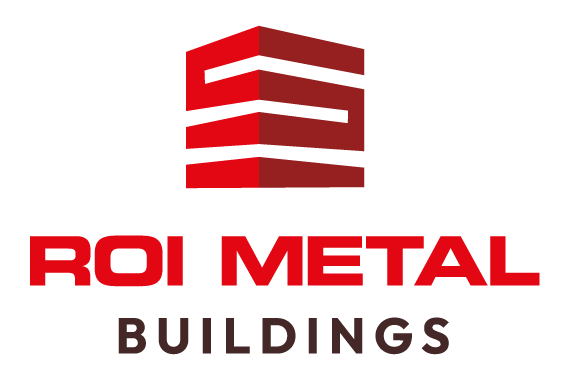Building a warehouse isn’t just about erecting walls and a roof; it’s a significant financial commitment that requires careful planning and consideration. Whether you’re a small business owner looking to expand or an entrepreneur starting fresh, understanding the various financing options available can make all the difference in turning your construction dreams into reality. From traditional bank loans to alternative lending solutions, the choices can be overwhelming. But don’t worry! We’re here to break down the essential components of warehouse financing, helping you budget effectively and navigate the costs involved so you can focus on building—literally!
Financing options for building a warehouse include traditional bank loans, SBA 7(a) and 504 loans for qualifying businesses, construction loans specifically tailored for new builds, and hard money loans that provide fast funding but often at higher interest rates. It is advisable to evaluate these options based on your creditworthiness, business plan, and financial situation to secure the best terms for your project.

How to Finance a Warehouse: Evaluating Construction Costs and Budget
When embarking on the journey of building a warehouse, merely knowing the main cost components isn’t enough. You need to explore each aspect in detail, understanding how different factors will affect your overall budget. One of the first steps is to evaluate the major cost components, which typically include land acquisition, materials, labor, and permits. Each of these elements can vary significantly in cost based on location and market conditions.
The land itself often represents one of the largest financial outlays in your project. Thus, selecting an optimal location is vital. For instance, while urban centers can be bustling with business opportunities, they also come with steep land prices. In contrast, rural areas may offer more affordable options but could pose challenges regarding logistics and access to resources. This trade-off requires thoughtful consideration of your warehouse’s projected function and accessibility needs.
In addition to these direct expenses, it is important to account for soft costs, such as appraisals, environmental assessments, and interest. Closing costs, which include various fees associated with finalizing a loan or property purchase, should also be factored into the warehouse construction budget. These soft costs are not directly related to physical construction but are essential for project completion and should be included in your overall warehouse construction budget.
Material Costs
Following land acquisition, material costs form another substantial portion of your budget. As you plan your warehouse’s structure, it’s important to note that not all materials are created equal. For example, opting for steel frames, which are favored for their durability and low-maintenance requirements, can help keep costs in check. Generally, steel structures can range from $10-$20 per square foot. However, as noted by various sources such as BuildSteel, this price may escalate depending on additional design complexities and required specifications.
Understanding material costs is only part of the equation; the labor and professional fees associated with the project are equally significant.
Labor and Professional Fees
Planning for labor expenses is essential when budgeting for a new construction project like a warehouse. These costs typically comprise 10% to 20% of your total budget. While hiring experienced contractors and specialized professionals such as architects or engineers may seem like an added expense, their expertise often translates into high-quality results that can save money in the long run due to fewer errors and rework. Additionally, competent labor can expedite construction timelines, ultimately benefiting your bottom line.
Planning ahead becomes crucial since deploying seasoned professionals can lead to smoother project execution.
Now that we’ve highlighted the major components of warehouse construction costs, it’s equally important to account for other contributing expenses that often go unnoticed yet can significantly impact your budget.
Planning for Additional Expenses
Beyond the fundamental costs of construction, warehouses often encounter various additional expenses that can catch you by surprise. It’s essential to consider these factors when budgeting for your project, as they can significantly impact your bottom line if overlooked. Imagine setting aside a budget only to watch it swell unexpectedly because you missed a few critical costs. This kind of oversight can lead to stress and complications down the line.
Contingency Fund
One of the wisest strategies is to allocate approximately 10-15% of your total budget toward a contingency fund. This buffer is invaluable in case unexpected costs arise. For instance, material prices can fluctuate dramatically due to supply chain issues — something we’ve all seen firsthand since the pandemic. Sudden price hikes or unforeseen site conditions can swiftly drain your finances if you’re not prepared.
For example, let’s say you’re budgeting $1 million for your warehouse project. Setting aside $100,000 for contingencies could be the difference between staying on track or scrambling to address unexpected expenses later. A cushion provides peace of mind, allowing you to focus on other critical aspects of the project without worrying that you’ll face an insurmountable financial hurdle.
Utility and Installation Charges
- Electricity
- Water
- HVAC systems
- Communication lines
When planning for your warehouse build, don’t forget about utility installation charges. Establishing connections with municipal resources or installing essential systems like HVAC often adds thousands of dollars to your expenses.
For instance, the cost of installing heating and cooling systems isn’t merely about purchasing the equipment; it also involves labor, materials, and possibly modifications to existing structures. Connecting properly to electricity or water might entail trenching work or adhering to specific safety codes set by local jurisdictions—which translates into added labor costs that may take potential projects over budget if they aren’t accounted for early on.
Permits and Inspection Fees
Another crucial expense involves obtaining permits and paying inspection fees. These costs can vary widely based on your location but are generally between 1-3% of your total construction costs. Researching local regulations thoroughly before starting your project is critical so that you remain compliant while avoiding delays and additional fines.
The permitting process can seem tedious but skipping this step in search of speed will only lead you down a difficult path later. Each municipality has its own rules regarding what permits are required—everything from zoning approvals to health and safety inspections needs to be factored into your timeline and budget. Falling short here not only leads to unnecessary costs but could also delay your plans significantly.
By considering these additional expenses ahead of time, you’ll position yourself more effectively as we explore financing options tailored specifically for warehouse construction.
Traditional Bank Loans for Warehouse Construction
Traditional bank loans are a common choice for financing warehouse construction, offering reasonable interest rates and extended repayment terms. A commercial real estate loan is another common type of financing used for purchasing, refinancing, or improving warehouse properties, often providing lower payments, flexible terms, and potential tax advantages for business owners. The process begins with a loan application, which requires submitting documentation and financial details. However, they come with specific eligibility requirements that can prove challenging for some borrowers. Final loan approval is contingent on meeting the bank’s requirements and passing credit approval checks.
Loan Types and Terms
Most banks provide secured loans specifically for warehouse projects. This means you’ll be putting up collateral—typically the property you’re building on—which reduces the risk for the lender. The Loan-to-Value (LTV) ratios generally range from 50% to 75%. To put this into perspective, if you’re looking at a loan amount of $1 million with a 70% LTV ratio, you might need to present assets worth approximately $1.4 million to qualify. Loan size can vary depending on the lender and the borrower’s qualifications. Interest rates in 2024 hover around 4-6%, so careful calculation of how this will impact your budget over time is crucial. For instance, securing a $1 million loan could lead to monthly payments spanning from $4,800 to $6,000, depending on your choice of repayment term. Some loans may include a balloon payment at the end of the term, which requires a large final payment.
As you explore the different aspects of bank loans, it’s noteworthy that various options exist beyond just standard financing. Options such as fixed-rate loans ensure predictable monthly payments, while variable-rate loans offer interest that can change based on market rates. Depending on your business model and cash flow forecast, one may be more suitable than the other.
Eligibility Requirements
When applying for these loans, be prepared to meet stringent eligibility criteria that banks enforce to mitigate risks. Only eligible applicants who meet the bank’s criteria will be considered for financing. The first step typically involves preparing a comprehensive business plan that outlines your project: don’t forget to detail projected revenues and growth potential! Next, include detailed financial statements and forecasts demonstrating your ability to repay the loan reliably.
Additionally, personal guarantees or collateral often accompany the application process; this ensures that if things don’t pan out as planned, the bank has recourse for its investment. This could involve offering up additional properties or assets as security. Acquiring a formal property appraisal is another crucial step in establishing the property’s value before the bank considers your request.
Given these stringent requirements, exploring other avenues can open up more flexible financing options tailored to your needs and goals.
Alternative Lenders and Private Financing
In recent years, the landscape of financing options has dramatically evolved, shifting the dynamics of how business owners can fund their construction projects. Traditional banks often come with a rigid set of guidelines, making it challenging for some borrowers to secure loans. This is where alternative lenders step in, providing a refreshing approach to financing. These lenders help businesses secure funding quickly and reliably, often bypassing the traditional delays associated with bank loans. Alternative lenders offer a range of credit products, including both secured and unsecured loans, to meet different business needs. Unsecured loans, while more accessible, often come with higher interest rates due to the lack of collateral. Institutions like credit unions, private lenders, and fintech companies introduce an innovative way to access capital with comparatively flexible terms and expedited approval processes. Their adaptability means less waiting time and potentially more suitable options for your financial situation.
Advantages of Alternative Financing
One of the most significant benefits of utilizing these alternative financing avenues is the higher Loan-to-Value (LTV) ratios that these lenders typically offer. While traditional banks often cap this figure around 75%, alternative lenders can go as high as 85%, allowing you to borrow more against your property. This increased leverage can be crucial in situations where upfront costs are daunting.
Additionally, you’ll find that closing times are remarkably quicker—sometimes as short as a week!—which allows you to seize opportunities without being bogged down by lengthy applications. Another advantage, especially for those in a burgeoning startup phase or with past credit issues, is the more lenient stance many of these lenders take on credit scores. However, this flexibility often comes at a cost: higher interest rates, usually hovering above traditional mortgage levels. Borrowers should also be aware of potential additional fees that may be charged for certain documents or expedited services when working with alternative lenders.
Private Financing Options
Diving deeper into the realm of private financing, hard money loans stand out as a compelling choice for urgent cash needs. These loans are generally secured by real estate and offer quick access to funds—an appealing feature when time is of the essence in construction projects. However, borrowing through hard money comes with its own set of considerations. Interest rates for these types of loans will often land around 10-15%, which is significantly higher than conventional mortgages. This structure works well if you’re confident in your ability to quickly convert that loan into more stable financing once your project gains momentum.
That said, it’s important to weigh your options carefully. Understanding whether you need funds immediately or if you can afford to wait might shape which financing path you’ll ultimately choose.
Furthermore, consider how your current resources might support your funding strategy; leveraging them could create additional pathways that facilitate the realization of your construction ambitions.
Utilizing Existing Assets for Funding
If you’ve established valuable assets over the years—like real estate, equipment, or even inventory—you’re sitting on potential capital that can help finance your warehouse project without needing to dip into loans with high interest rates. Using your own capital can strengthen your financial position and improve your chances of securing additional financing. Additionally, maintaining sufficient working capital is essential to ensure smooth operations during the warehouse construction process. Tapping into these assets not only provides funds but can also enhance your overall financial flexibility, allowing you to make more strategic decisions throughout your business journey.
Home Equity Lines of Credit (HELOC)
One popular method to access the equity in your home is through a Home Equity Line of Credit (HELOC). This financial option allows you to borrow against the value you’ve built up in your residence at lower interest rates compared to standard commercial loans. Imagine if your home has $200,000 in equity; you could potentially tap into that and secure about $150,000 with which to fund your warehouse project. This means you’re using the power of your past investments to create future opportunities—a truly savvy move.
To illustrate this further, let’s consider how HELOCs work: essentially, they function as revolving credit lines, similar to credit cards. You can draw from it as needed and only pay interest on the amount actually used. This flexible cash flow enables you to address unexpected expenses during your warehouse construction or operation phases without committing to onerous debt terms.
Cash-Out Refinancing
Another attractive option is cash-out refinancing, which lets you refinance your current mortgage for an amount greater than you owe and take the difference in cash. So rather than letting your home simply serve as shelter, you’re encouraging it to actively contribute to your wealth-building strategy by helping finance your warehouse endeavor.
Take John, for example—he owned a modest but valuable home. By refinancing, he freed up $100,000, using this as a much-needed down payment for his new warehouse construction. It was an investment not just in property, but in growing his business as well. For John, instead of viewing his house merely as a place to live, it became a strategic asset that allowed him to expand his operations significantly.
In addition to leveraging personal assets, exploring alternative financing options can open pathways toward attracting private investors eager to contribute to your warehouse vision.
Attracting Investors to Your Warehouse Project
For a warehouse project to appeal to investors, it is essential to present it as a promising business opportunity. Imagine walking into a room full of investors, ready to pitch your ideas with confidence. You want to ensure your proposal captures their interest from the very first slide. This means crafting a persuasive narrative that outlines the unique advantages of your warehouse, backed by solid data.
Creating a Comprehensive Business Plan
At the heart of any appealing investment proposal is a comprehensive business plan. This document should detail your warehouse’s purpose, anticipated Return on Investment (ROI), and the market opportunities that support your venture’s viability. Highlighting unique selling points—such as proximity to major transportation routes or e-commerce centers—can resonate deeply with potential investors. For example, if you’re situated in an area with rapidly increasing demand for delivery services, emphasize how your warehouse can help meet that need while generating competitive rental income.
Sharing detailed market analyses—including competitor occupancy rates and emerging trends—can help build credibility and show investors you understand the landscape fully.
Equity vs. Debt Financing
Choosing the right financing structure is another key factor in attracting investors. It’s vital to consider whether equity financing or debt financing aligns better with your project’s goals and investor expectations.
In essence, equity financing involves offering investors a stake in your warehouse’s future profits—a model that can encourage collaboration rather than obligation. However, this approach requires you to share control and profit down the line. On the other hand, debt financing means borrowing funds and agreeing to repay them over time, usually with interest. This method allows you to retain full ownership of your asset but comes with the caveat of regular repayment schedules.
Understanding what type of relationship you wish to cultivate with your investors can significantly impact how well you attract the right kind of funding.
Transitioning from distinguishing between financing methods brings us to explore how to select the most fitting option tailored to specific needs in this vital process.
Choosing the Best Financing Option for Your Needs
Selecting the right financing option goes beyond just comparing interest rates; it involves understanding how each type fits into your broader financial picture and the specific needs of your project. Understanding your business needs is crucial when selecting a financing option, as different programs are tailored to meet various operational and financial goals. Securing funding can involve various methods, including warehouse lending, SBA loans, and traditional bank loans.
For instance, some borrowers may prefer traditional bank loans due to their lower interest rates and higher loan-to-value ratios. However, these loans often come with stricter eligibility requirements and longer approval times. Conversely, alternative lenders provide swift access to funds but may impose higher interest rates, significantly affecting long-term costs. The purchase of a commercial property or commercial building can be financed through different loan programs, each designed to address specific business needs. When comparing financing options, it is important to evaluate loan-to-value ratios, interest rates, and closing costs across different programs to make an informed decision. Warehouse lending is a financing method where banks provide loans secured by inventory or collateral assets, often used by medium-sized retailers. Public warehouses and public warehouses approved by third parties can be used to hold collateral for warehouse financing arrangements.
To make an informed decision, it’s essential to consider your current financial standing alongside your future plans. SBA loans, offered by the Small Business Administration, provide many advantages through their loan programs, such as lower down payments and longer terms, which are specific benefits for eligible borrowers. These loan programs are designed to provide benefits like favorable terms, and eligibility may depend on factors such as veteran status, gender, or race. SBA loan programs involve various parties, including a central servicing agent responsible for loan administration and servicing. Small business owners and small businesses are the primary borrowers for these financing options. Construction, equipment, and other expenses can be financed through these loan programs. Industrial warehouses are a popular type of commercial property for investment and business expansion. The borrower is responsible for repaying the loan according to the agreed terms.
Comparison of Financing Options
| Financing Option | Interest Rates | LTV Ratios | Approval Time | Repayment Flexibility |
|---|---|---|---|---|
| Traditional Bank Loans | 4-6% | 50-75% | Weeks | High |
| Alternative Lenders | 8-15% | Up to 85% | Days | Moderate |
| Home Equity Loans | 3-5% | Up to 90% | Weeks | High |
| Private Investors | Negotiable | N/A | Variable | High |
As you review this table, keep in mind that the best option will always depend on your specific circumstances. If you’ve got solid income statements and a good credit history, opting for a traditional bank loan could be prudent because of its favorable terms and conditions. However, if you’re on a tight timeline or need flexible repayment options—say if your project scope changes unexpectedly—alternative lending or home equity loans may be more appropriate.
Additionally, it’s vital not only to assess interest rates but also to factor in potential fees associated with securing loans.
Personalized Recommendations
When choosing a financing route, ensure you’re aligned with your overall business strategy and comfort level with risk. Emma Parker, a seasoned funding manager with years of experience, emphasizes that tailoring loan options to meet specific project needs can greatly enhance success rates.
Understanding loan details—like how quickly you can access funds or what penalties might apply for early repayment—can empower you to make better financial decisions throughout your project lifecycle. Therefore, before locking in any agreement, carefully read through all terms and conditions.
For anyone embarking on this journey, thorough research coupled with expert advice can pave the way for smarter funding choices when building warehouses.
Remember, having the right financing can set the foundation for your warehouse project. For personalized assistance or more information about financing options specifically catered to your needs, feel free to reach out at https://www.roimetalbuildings.com/contact or call us at 865-316-9009.
Warehouse Financing FAQs
Are there specific lenders who specialize in financing warehouses or similar commercial properties?
Yes, there are specific lenders such as commercial banks, credit unions, and alternative financing companies that specialize in financing warehouses and similar commercial properties. These lenders often have tailored loan products designed for the unique needs of real estate investors in this sector. According to a report from the Mortgage Bankers Association, approximately 33% of all commercial real estate loans issued in recent years have been directed towards industrial properties, indicating a growing interest and availability of funds for warehouse financing.
What role do credit scores play in obtaining financing for a warehouse project?
Credit scores are crucial in securing financing for a warehouse project, as they reflect a borrower’s creditworthiness and financial stability. Lenders typically use these scores to assess risk and determine interest rates; higher scores can lead to better loan terms. According to a 2021 report, borrowers with credit scores above 740 often receive interest rates that are nearly 0.5% lower than those with scores below 620, which can significantly impact overall project costs. Thus, maintaining a good credit score is vital for obtaining favorable financing options.
What alternative funding sources exist if traditional financing options are not viable?
Alternative funding sources for warehouse construction can include crowdfunding, private equity investment, and grants from government programs. Crowdfunding platforms like Kickstarter have gained popularity, raising $1.5 billion for real estate projects in 2023 alone, showcasing the potential of community support. Private equity firms may provide capital in exchange for ownership stakes, offering both funds and valuable industry expertise. Additionally, various state and local governments may offer grants or low-interest loans aimed at stimulating economic development, with a reported $5 billion allocated to such initiatives across the U.S. in 2023.
How can businesses qualify for government grants or subsidies related to warehouse construction?
Businesses can qualify for government grants or subsidies related to warehouse construction by meeting certain criteria, such as demonstrating economic need, creating jobs, or investing in sustainable practices. Typically, applicants must provide detailed project plans, budget forecasts, and proof of compliance with local regulations. Statistics show that companies that align their projects with government priorities—like affordable housing or green energy—have a higher success rate in securing funding. In fact, programs targeted at green construction have seen funding approvals rise by over 25% in recent years, highlighting the government’s focus on sustainable development.
What types of loans are specifically tailored for commercial construction projects like warehouses?
For commercial construction projects like warehouses, several loan types are specifically tailored to meet the needs of builders. These include traditional commercial mortgages, which typically cover up to 80% of the property’s value, and SBA 7(a) loans that can finance up to $5 million with favorable terms for small businesses. Construction-to-permanent loans are also popular, allowing borrowers to finance the construction phase and then convert to a mortgage once




